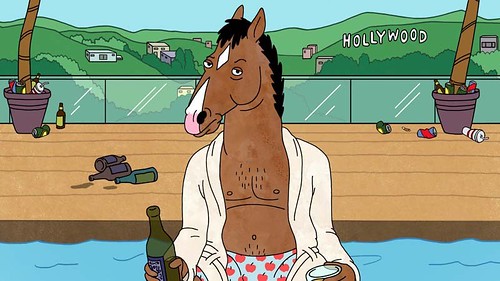Cartoons and Mental Health: Animation has long been seen as a medium of entertainment, a way to escape into fantastical worlds and enjoy a lighthearted experience. However, beyond its entertainment value, cartoons have also emerged as powerful tools for addressing mental health, offering viewers a unique way to process emotions, cope with stress, and gain insight into their own mental well-being. As a cartoonist, I’ve observed how animation, with its vivid visuals and relatable characters, can help individuals understand complex emotions, normalize struggles, and provide a sense of comfort.
In this article, we’ll explore the therapeutic power of animation, examining how cartoons can serve as a vehicle for healing, self-expression, and emotional support. From providing emotional relief to offering meaningful discussions about mental health, cartoons have become an important resource in addressing both the personal and societal aspects of mental well-being.
1. Understanding the Connection Between Cartoons and Mental Health
At first glance, cartoons may seem like just a form of entertainment, but they have a profound ability to engage with mental health in a meaningful way. Their bright colors, exaggerated emotions, and larger-than-life characters create a safe, welcoming space where people can confront difficult issues in a non-threatening way. The whimsical nature of cartoons allows individuals to explore their emotions, whether through humor, fantasy, or storytelling, all while providing a comforting sense of familiarity.
Why Cartoons Are Effective in Addressing Mental Health
Cartoons can be particularly effective for discussing mental health because they engage both children and adults. Their simplicity allows viewers of all ages to connect with the content, making complex emotions more accessible and digestible. Additionally, cartoons can serve as a form of escapism, providing a much-needed break from the stress of everyday life while still offering valuable insights into mental health.
Moreover, cartoons often use humor and absurdity to present mental health issues, making them less intimidating. This humor helps reduce the stigma around mental health, encouraging individuals to talk about their experiences openly and without fear of judgment.
2. Cartoons as a Tool for Emotional Expression
One of the most powerful ways that cartoons help with mental health is by allowing characters to express emotions that viewers can relate to. Many animated series feature characters who struggle with emotions like anxiety, sadness, or anger, providing a safe space for audiences to explore these feelings. Through these characters, viewers are able to see that they are not alone in their struggles, which can be incredibly therapeutic.
Characters Who Represent Mental Health Struggles
Many cartoons have introduced characters who openly struggle with mental health issues, providing relatable representations for viewers. These characters help normalize mental health struggles and offer hope that, like them, viewers can work through their difficulties.

Example: BoJack Horseman (2014–2020) is a prime example of a show that uses animation to explore themes of depression, addiction, and self-worth. The show’s protagonist, BoJack, is a washed-up television star struggling with addiction and depression, but his journey is portrayed with a level of honesty and emotional depth that resonates with viewers. The show uses dark humor and absurd situations to highlight real mental health issues, encouraging a candid conversation about mental health in a medium often seen as lighthearted.
Personal Insight: As a cartoonist, creating characters that address mental health issues can be an incredibly rewarding process. It allows me to use the medium to create open conversations around difficult topics and provide a source of comfort and understanding to viewers who may be going through similar struggles.
Emotional Validation Through Animation
Cartoons offer a unique form of emotional validation, as they can give voice to experiences that viewers may have difficulty articulating. Seeing a character express feelings of anxiety, loneliness, or frustration can help individuals understand and label their own emotions. This validation is crucial in the mental health journey, as it allows individuals to feel heard and understood, even when they may not be able to communicate their feelings clearly.
Example: In Inside Out (2015), the animated film personifies the emotions of a young girl named Riley—Joy, Sadness, Anger, Fear, and Disgust—allowing viewers to better understand the complexity of emotional experiences. The film demonstrates how all emotions, even negative ones, play a vital role in shaping our mental well-being, offering a valuable lesson on emotional acceptance and self-compassion.
3. Promoting Mental Health Awareness and Education
Cartoons are not only a tool for individual healing—they can also serve as educational platforms that raise awareness about mental health issues. Through stories and characters, animated series can address important topics like anxiety, depression, PTSD, and self-care, helping to break down barriers to mental health education.
Raising Awareness of Mental Health Issues
Many animated series have begun to tackle serious mental health issues, educating viewers on what these conditions look like and how they affect individuals. These portrayals help reduce stigma and increase empathy for people who are struggling with their mental health. By incorporating these themes into storylines that are accessible and engaging, cartoons can reach a broad audience and foster an understanding of mental health challenges.
Example: Kipo and the Age of the Wonderbeasts (2020) is a Netflix series that deals with themes of trauma, healing, and resilience. Kipo, the protagonist, undergoes significant emotional growth throughout the series, and her journey toward healing resonates with viewers who may have experienced similar struggles. The show uses its vibrant animation to address complex emotional and psychological issues in a way that’s both approachable and educational.
Supporting Mental Health Education for Children
Children’s cartoons have a particularly important role in promoting mental health education, as they help kids learn how to navigate their emotions in a healthy and constructive way. Through fun and relatable characters, children can learn about feelings, coping strategies, and emotional intelligence, laying the foundation for better mental health throughout their lives.
Example: Sesame Street has been a pioneer in using animation to address mental health issues for children. The show has introduced characters like Julian, who deals with his emotions in a way that teaches children how to express themselves. Sesame Street has addressed grief, anxiety, and social-emotional learning, providing kids with the tools they need to understand and cope with their feelings.
4. The Role of Cartoons in Social Connection and Community Building
Social media and online platforms have allowed cartoons to foster a sense of community and support for those dealing with mental health issues. Animated shows and characters often become a source of comfort for viewers, who use them as a way to connect with others who share similar experiences. This connection can be particularly powerful in an era where social isolation is prevalent, and mental health struggles are often kept behind closed doors.
Creating Online Communities of Support
With the rise of fan communities on platforms like Twitter, Reddit, and Instagram, cartoons that address mental health issues have become a point of connection for individuals who may otherwise feel isolated. Fans of shows like BoJack Horseman, Steven Universe, and Adventure Time often share their personal stories and struggles with mental health, using these shows as a source of solidarity and healing.
Example: Fans of BoJack Horseman frequently turn to online communities to discuss the show’s portrayal of addiction, depression, and self-doubt. The show’s honest and often painful portrayal of mental health resonates with viewers, who use it as a way to understand their own experiences and engage with others who have similar feelings.
Cartoons offer a form of emotional connection and empathy that can be particularly valuable for those struggling with mental health. The portrayal of characters overcoming challenges and working through their emotional struggles gives viewers hope and comfort. These stories remind individuals that they are not alone in their feelings, and that healing is possible.
Example: In Adventure Time, characters like Finn and Jake go on physical and emotional journeys that mirror the challenges many people face in real life. The show doesn’t shy away from depicting feelings of loss, loneliness, and growth, providing a safe space for viewers to explore their emotions.
5. The Future of Cartoons as a Mental Health Tool
As the importance of mental health becomes more widely recognized, the role of cartoons in promoting emotional well-being will only continue to grow. The potential for animation to tackle complex mental health issues in a compassionate and accessible way is vast, and as more creators bring their personal experiences to the screen, cartoons will become an even more essential part of the conversation about mental health.
Integrating Mental Health Themes Into More Cartoons
As the entertainment industry continues to evolve, it is likely that more animated series will take on mental health themes, exploring topics like anxiety, depression, grief, and trauma in ways that resonate with audiences of all ages. The challenge will be to handle these themes with care and sensitivity while maintaining the humor and accessibility that make cartoons so powerful.
Example: Upcoming animated series, like Big Mouth (2017–present), which explores the challenges of adolescence, or The Owl House (2020–2023), which has dealt with identity and self-discovery, show that animation has the potential to normalize conversations about mental health. These shows engage with difficult topics while maintaining an approachable tone, making them accessible to a wide audience.
Cartoons and Mental Health: The Healing Power of Cartoons
Cartoons are no longer just a form of entertainment—they are increasingly recognized as a powerful tool for promoting mental health. Whether through emotional validation, education, or community building, animation offers a space for viewers to process their feelings, learn about mental health, and connect with others who share their experiences. The therapeutic power of cartoons lies in their ability to entertain while also offering valuable insights into the emotional and psychological challenges that people face. As creators continue to explore mental health in their work, cartoons will undoubtedly play a larger role in the ongoing conversation about mental well-being, offering comfort, guidance, and hope to audiences worldwide.
This post was created with our nice and easy submission form. Create your post!





One Comment